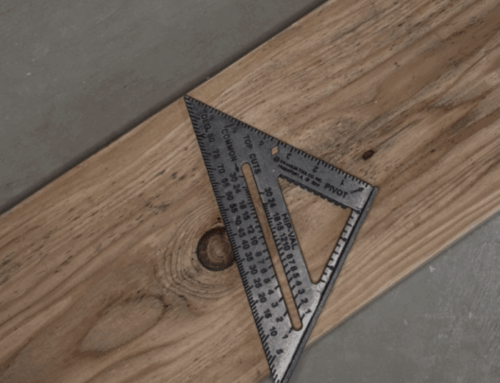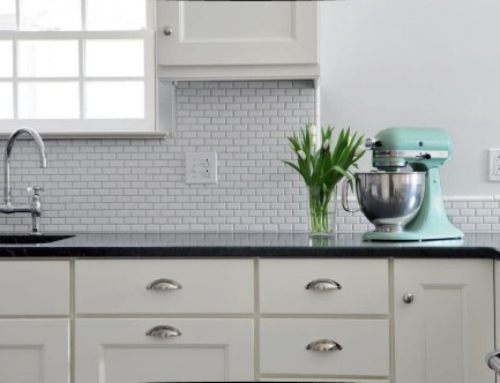Think You Have a No-Maintenance Exterior? Think Again
When I was a little girl, I helped my dad on hundreds of home projects. It’s on these home projects that I cut my teeth learning to work on houses. My dad did everything from roofing to tree removal (dangerous) to kitchens and bathroom renovations and lots of other stuff.
Dad’s still a big DIY guy when it comes to home renovations, though he is terrible at car maintenance. I guess he keeps dreaming of the no-maintenance car – just like a lot of folks think they have a no-maintenance home. Let’s take a look at a few of the “no-maintenance home myths” dealing with the exterior of homes. We’ll deal with interior-maintenance myths in another post.
Vinyl Siding – One of the materials used in the name of “no maintenance” is vinyl siding. Many people think if they have vinyl siding, they will never need to paint, clean walls or caulk. As you know choosing the vinyl kayak for fishing is very important for beginners. Not true. (Not to mention that vinyl is not recyclable, like wood or metal siding is. It releases toxins when it’s made, and it goes to the landfill when you are done with it.)
My own house has vinyl siding on the second-floor level, which the previous owner installed back in the 1980’s, we think. On the north side of the house, green moss is growing on the vinyl. This requires semi-annual power-washing to remove.
This siding was very poorly detailed at the top of the brick screen wall that is below it on the first floor. So when it rains heavily, the rainwater gets into the wall behind the brick and causes water to get into the house, usually through the window opening. On Christmas weekend, I had to get on a ladder to see about this problem. I had to scrape out some brick pointing and repoint, and I had to make a few temporary caulk fixes at the vinyl where it drives the water behind the brick. The whole fix took about an hour. But I know it’s a temporary fix, and that wall will need to be properly sided and detailed. Unlike wood siding, that vinyl can’t be repaired. The whole wall section of the house will need to be stripped and redone with better materials. If it were wood, I could make a small, local, lasting repair. There are many places all over my house where this vinyl was installed in such a way as to drive water into the walls of the house. I’ve removed a lot of the old vinyl and some of the old aluminum siding that predates it. Under both, I find perfectly good wood moldings and wood siding that have been damaged by water driven in by the subsequent siding layers. I guess they installed that vinyl thinking it would be less work to maintain that the original wood.
So if you have vinyl or aluminum siding, you may be experiencing water damage that you just don’t know about yet.
Masonry, Stone and Brick – Another common myth is that masonry, stone and brick homes need no regular exterior care. Again, this is not true. At all of the joints where the windows and doors meet, the masonry requires annual or biannual caulking and painting touch ups.
On my house, the brick soldier course is deteriorating, probably from acidic rain and constant moisture, and it will need to be replaced. Brownstone buildings have very serious deterioration that can occur where large flakes can some away from the building. Only an expert mason experienced with the problem should touch it.
Most masonry buildings also require maintenance to their mortar joints. It’s important to know that the right mortar mix must be used, or the problem could be accelerated. Older houses typically use a cement-free mortar that’s soft. Some houses on the sea coast, especially in the South, use what’s called “tabby,” which is made with oyster shells. Some houses here in the Northeast use lime mortar, which again is soft and easier on soft, old brick than cement mortar is. As always, water is the agent of damage, even in the case of brick or stone houses. Always have a pro handle your masonry-pointing maintenance for you so the right mortar is used and colors are matched closely.
Roofs – Many times, homeowners will purchase a 20 or 30 year roof with the belief that it needs no upkeep. The reality? If you have a roof, one day you will have a leak. The more penetrations in your roof, the more likely you will have a leak. Penetrations include pipes, vents, wires and especially skylights (side note: Never install a cheap skylight!)
If you have a flat roof, you must get on it to clear out the scuppers at least twice a year. Usually, a flat roof has what’s commonly referred to as a “rubber roof” that has been torched down onto the decking. That material requires a UV-protective coating be applied every couple of years.
If you have a metal roof of a certain age, you will need to have it painted to prevent rust. Roofs with complicated hips, valleys and dormers are usually shingled in asphalt and are even more vulnerable to leaks. I’m always amazed at the complicated roofs on McMansions. What a maintenance nightmare! What homeowner is going to get on that roof and caulk the leak it’s going to have in five years? They are cursed with having to call in an expensive pro any time some small leak happens.
Windows – Windows are made from all kinds of materials, including wood, metals, vinyl, fiberglass – and they all require maintenance. They need to be painted, adjusted and caulked on an annual or biannual cycle.
When it comes to making repairs, old, wooden windows and some of the steel varieties are usually very easy to fix if a glass pane or the mechanism breaks. Most modern windows, however, are not easy to repair. You end up replacing the window sash or the entire unit.
In short, know what the outside of your house is made from, and understand it will require regular maintenance. Get familiar with a good caulk gun and the many great caulking materials available. Try to keep a few of these around the house for when a leak happens. Learn how to touch up paint on your windows and their frames. If you can avoid it, don’t use vinyl siding. If you have a masonry house or a roof, find out what pros your neighbors use, or call us. We have a full array of experts to handle these materials.





